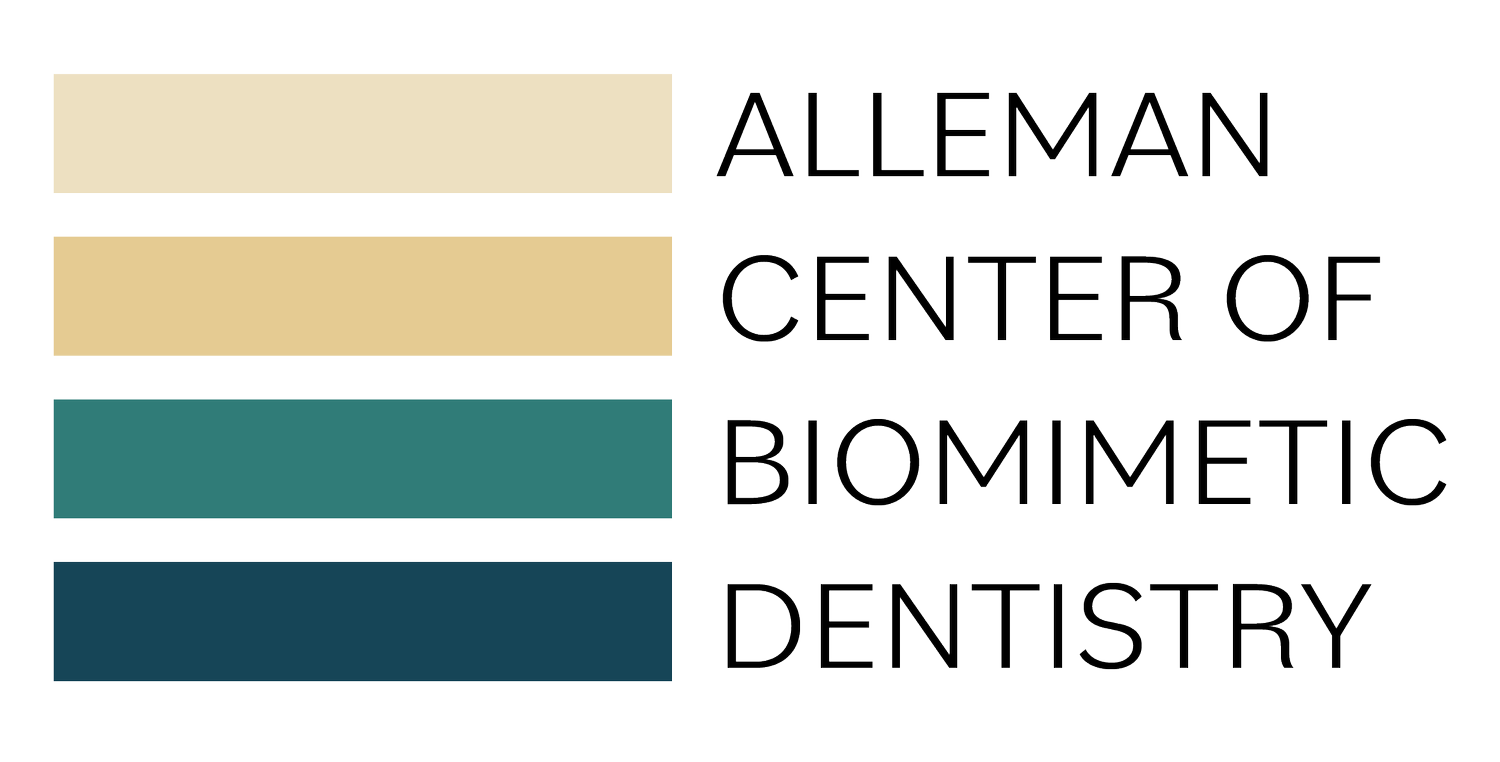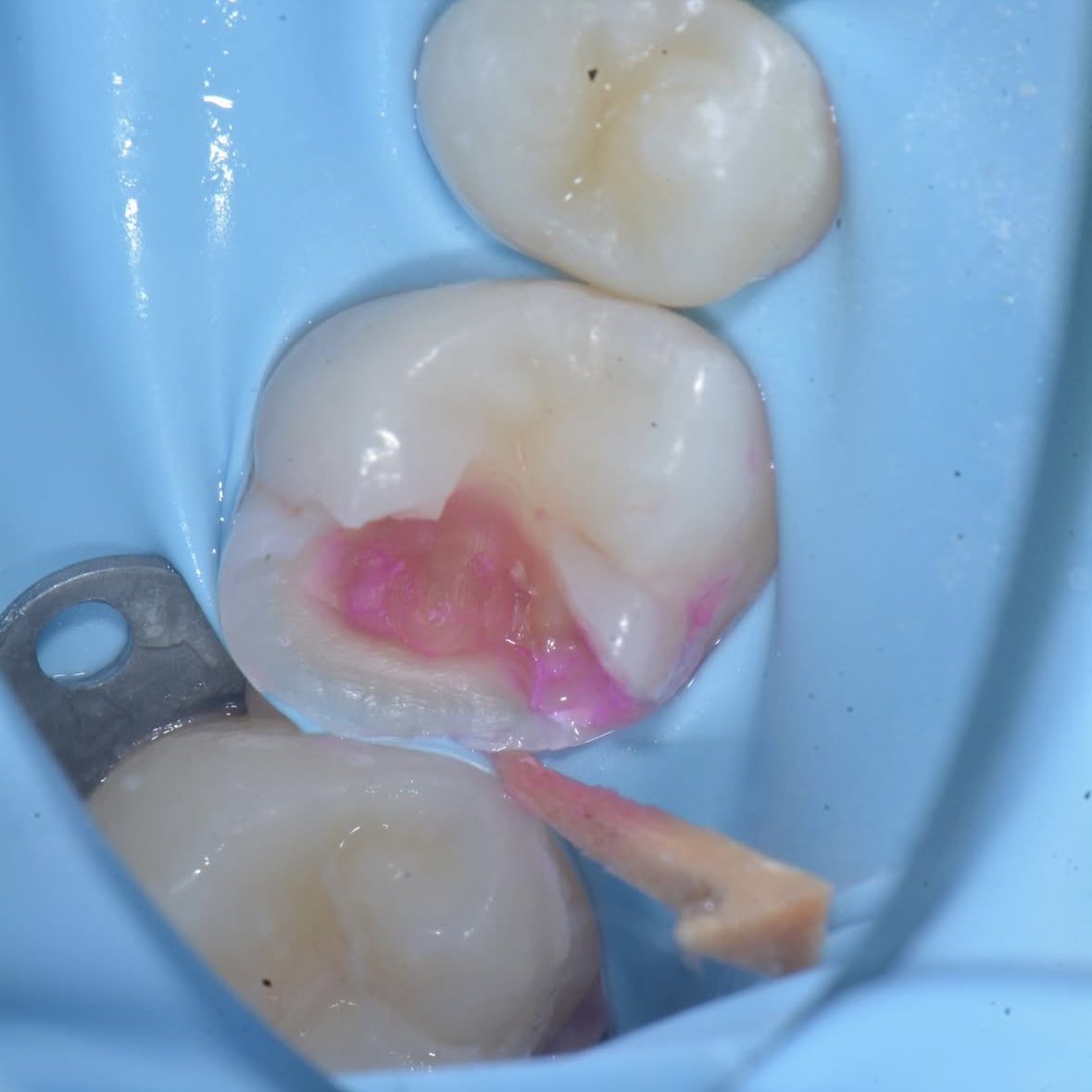Caries Detector Dye (CDD): Increase Bond Strength and Protect the Pulp
Caries detector dye (CDD), also called caries indicator dye, is largely considered a teaching tool by dentists, but at the Alleman Center, we consider it essential to creating a long-lasting restoration. Dental students are encouraged to use caries detector dye to learn caries identification and then move to a tactile approach (using an explorer). While a tactile approach can identify soft dentin that has been degraded by the bacteria, precise treatment that is consistent between providers requires the use of caries detector dye. Dentists of all levels should be using caries detector dye with every case they treat. When creating his Six Lessons Approach, Dr. David Alleman found using caries detector dye to be the only way to achieve results that were reproducible with every case.
This case by Dr. Davey Alleman, DMD shows how caries detector dye identifies carious dentin to create a caries-free peripheral seal zone.
What is Caries Detector Dye?
Caries detector dye was developed by Takao Fusayama and the team at Tokyo Medical and Dental University to increase predictability of caries treatment. While teaching, a student was practicing tactile caries removal and feeling for “hard tooth structure” and the student asked Dr. Fusayama, “How hard is hard?”
From this question Dr. Fusayama recognized how subjective a tactile approach was and sought to find an objective tool for caries detection and treatment.
Slide from the Biomimetic Mastership.
How does Caries Detector Dye Work?
Caries detector dye shows denatured collagen by becoming trapped in the denatured collagen fibrils. Areas of greater degradation will stain dark pink while areas with some remaining structure will stain light pink. This allows practitioners to clearly see carious dentin.
Caries detector dye stains denatured collagen for predictable caries treatment. Case by Dr. Davey Alleman, DMD.
Using Caries Detector Dye to Increase Bond Strength
A 1985 study found that 59% of cases treated using a tactile approach left caries behind (Anderson H, et al. A comparison of digital and optical criteria for detecting carious dentin. J Prosthet Dent. 1985). As stated in his Hierarchy of Bondability, Dr. David Alleman outlined how different substrates in the tooth will develop different bond strengths with a gold standard dentin bonding system. If a dentin bonding system has a potential bond strength of 54.1 MPa, affected dentin (inner caries) will lose 30-50% of this bond potential and infected dentin (outer caries) will lose 50-75% of its bond potential. When moving away from retention form and relying on your bond to dentin instead, leaving caries in the peripheral seal zone will mean the difference between a restoration that lasts two years compared to a restoration that could last 20 years. Predictable caries treatment is essential for the strongest possible bonds.
Creating a caries free bonding field is especially important for structurally weakened teeth like non-vital teeth. Case by Dr. Davey Alleman, DMD.
Predictable Caries Treatment to Protect the Pulp
Using caries detector dye to improve bond strength also protects the pulp’s long-term health. Following the peripheral seal zone concept and removing dentin stained with caries detector dye around the pulp, practitioners are able to use immediate dentin sealing and resin coating to create a bond at the nanometer level that mimics the strength at which a tooth is bonded to itself. Called a biomimetic bond because it mimics a tooth’s natural structure, this bond blocks bacteria from entering under the pulp, eliminating that pathway to reinfection and allowing the pulp to heal.
From predictable caries treatment to biomimetic preparations, Dr. David Alleman’s Six Lessons Approach to Biomimetic Restorative Dentistry outlines each step for practitioners to achieve long-lasting restorations. To learn more about predictable caries treatment, join an upcoming Alleman Center dental training program.
Learn more about the predictable caries removal in this Six Lessons Approach Podcast episode.






